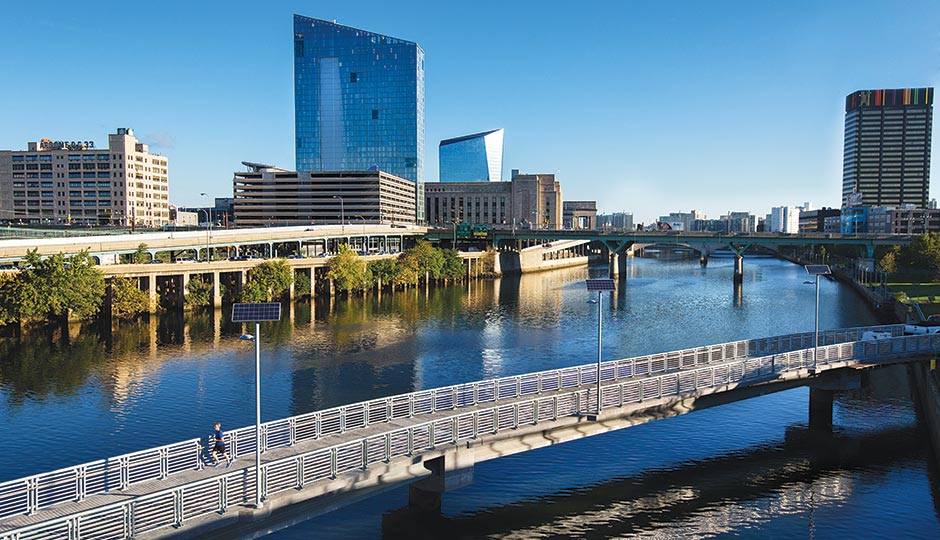A Massive Number of People Used the Schuylkill River Trail Last Year
For the first time ever, the Delaware Valley Regional Planning Commission placed permanent counting devices on circuit trails throughout the Philadelphia area last year, enabling the agency to get a highly accurate measure of how many people use them.
The results are in, and it’s no surprise that the Schuylkill River Trail at Kelly Drive was the most-frequented spot of the five studied areas, with pedestrians and cyclists passing through 663,201 times between June 2014 and June 2015. The Schuylkill River Trail was recently named the best urban trail in the country in a USA Today’s reader’s choice poll.
That means pedestrians and bikers used the trail at that location about 1,817 times per day; comparatively, SEPTA’s 40 bus route — which crosses the South Street bridge at the trail’s current southern terminus — has 7,070 trips on an average weekday.
Here’s how many times bikers and pedestrians traveled through the four other sites on the region’s circuit trails in the last year:
- Chester Valley Trail – 240,182
- Schuylkill River Trail at Pawlings Road – 208,180
- Wissahickon Trail – 208,114
- Cynwyd Heritage Trail – 114,619
The DVRPC has installed six additional permanent counters since last summer, for a total of 11 on the Philly region’s circuit trails. Scott Brady, DVRPC’s manager of the Office of Travel Monitoring, said the agency will eventually add 10 or 12 more counters to the city’s streets, as well as an extra 10 or 12 to roads in the suburbs, in order to measure cyclist and pedestrian usage there.
Brady said PennDOT has 22 permanent counters throughout the entire state to track automobile use. So this is kind of a big deal.
The thinking among many urbanists is that the more that officials collect data showing how many pedestrians and cyclists use streets, trails and other roadways, the easier it will be to push for more funding for infrastructure from the city and state.
As Brady said, “If you don’t count, then you don’t count, as in you don’t matter.”



